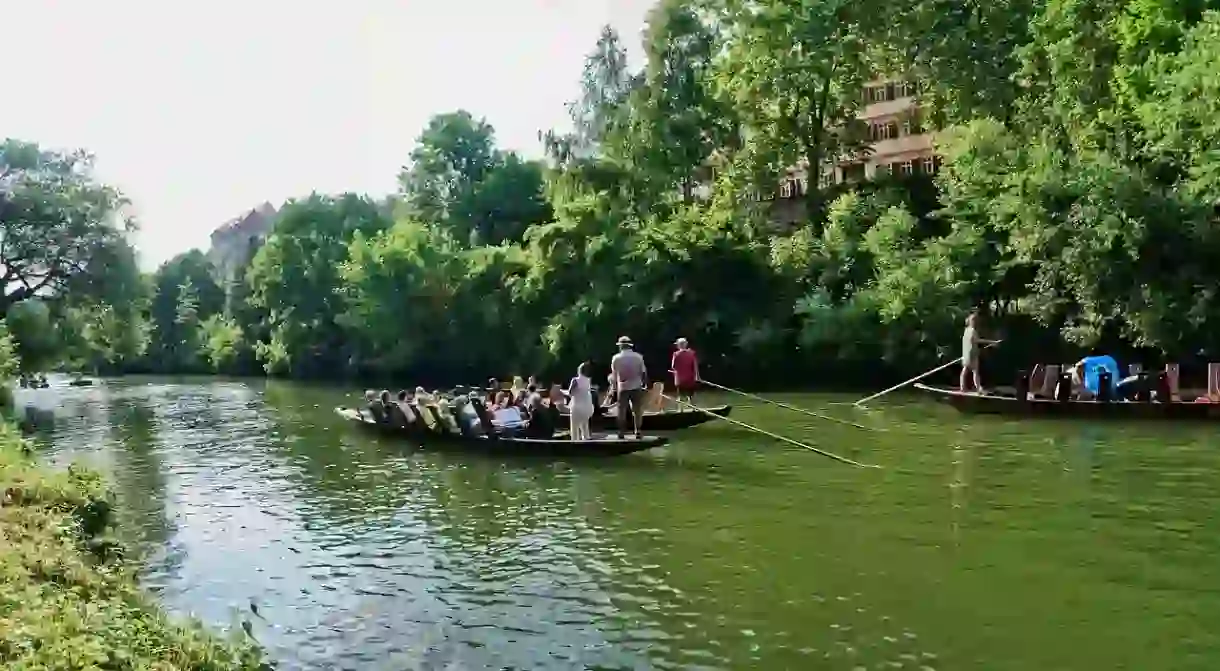How to Spend 24 Hours in Tübingen, Germany

Tübingen is a charming university city south of Stuttgart which offers UNESCO World Heritage Sites, stunning architecture, a picturesque old town and fantastic food and drink. One day is just about enough to sample a bit of everything. Read on for our ultimate guide to spending 24 hours in Tübingen.
Morning
Any day of sightseeing should start with a sumptuous breakfast. If you arrive by train, head down on Karlstraße towards the old town and into one the many cafés. Padeffke is a popular spot and serves several breakfast options – muesli, fresh fruits, fresh buns and bread with cheese, sandwich meats and vegetarian spreads. At Café L, which is just down the road, you can pick and choose from their breakfast platters or create your own from a selection of bread and pastries, cheeses, meats, spreads, muesli and yoghurt.

Once you’ve fuelled up on coffee, tea and food, start your tour by exploring Tübingen’s old town. You’ll pass the city’s tourist information centre where you can pick up brochures and a city map. If the weather plays along and you’re keen to sail down the canals in a punt, it’s advisable to book tickets in advance there and then. From May to September, the hour-long boat trips run daily at 1pm and 5pm on Saturdays for €7 (USD$8.15).
The St. George’s Collegiate Church is a great place to start. Since its founding in 1183, the abbey also served as a school, and noble hunting lodge and guided tours take you around the monastery, on-site Gothic church and the summer refectory. It’s worth climbing up to the viewing platform atop the soaring steeple for panoramic views of the city centre.
Speaking of views: Tübingen’s most idyllic and photogenic spot is just around the corner from here. Look out for the Neckar riverfront which is seamed with colourful houses and the distinctive Hölderlinturm tower. After you’ve snapped some travel shots, keep meandering through the old part of town, including the cobbled market square which is encircled by pastel-coloured timber-framed houses and the old town hall with its old astronomical clock. If you want to learn more about Tübingen’s 600-year long history, pop into the City Museum around the corner.

You should have enough time to browse the speciality shops of the old town and make your way to one of the most charming parts of Tübingen. Both the Unterstadt and the so-called Weingärtner quarter are often overlooked by visitors, but the winding alleys are studded with quaint wine taverns, antique shops and boutiques posing a great way to spend the rest of your mid-morning.
Afternoon
Keep an eye on the time to make sure you’re back down at the landing pier at the Hölderlinturm tower for your punting trip. The tour is a great way to see the charming city from a different angle.
Once back in the old town, take your pick of a lunch spot. There are countless delightful cafés, gastropubs and wine taverns that offer regional specialities, light salads and even dedicated vegan food around the Holzmarkt market square. On Monday, Wednesday or Fridays the local farmers’ market stalls move onto the plaza where you can get a quick bite to eat.

There’s still a couple of sightseeing highlights left on the list for you to explore in the afternoon. If you continue your way up the hill, you’ll end up at one of Tübingen’s must-sees: Hohentübingen Castle. The facade shows an architectural mix of medieval and modern elements that bear witness to the castle’s 980 year-long history.
Today, the prestigious Tübingen University occupies much of the complex, but there are a few things that are not to be missed: the laboratory where Friedrich Miescher discovered DNA in 1869, an 85,000-litre wine barrel from the mid-16th century and the Ancient Culture Museum (€5 (USD$5.80)), which boasts a fascinating collection of cultural artefacts from the past 40,000 years. The highlight of the latter has to be the collection of small animal figurines from the Ice Age carved from mammoth ivory which was found in caves of the Swabian Alps and is considered the world’s oldest artwork of modern humans. In 2017, UNESCO acknowledged the significance of the artistic artefacts and added them to the World Heritage List.

Evening
You can’t leave Tübingen without having tried some of the local dishes. Swabian cuisine has come up with some unbelievably tasty culinary creations, so keep your eyes peeled for the German mac and cheese, also known as Käse Spätzle, Schupfnudeln or Maultaschen. A good place to start looking is the Neckarmüller restaurant. This place is not only known for traditional foods, but also scores with an idyllic terrace overlooking the river.
Since the entire Stuttgart region prides itself on having some of the best locally-produced wines, your culinary journey wouldn’t be complete without tasting some. Weinhaus Beck near the market square is a cosy, yet popular and often busy place, to sample one of the 600 different regional and international varieties.













